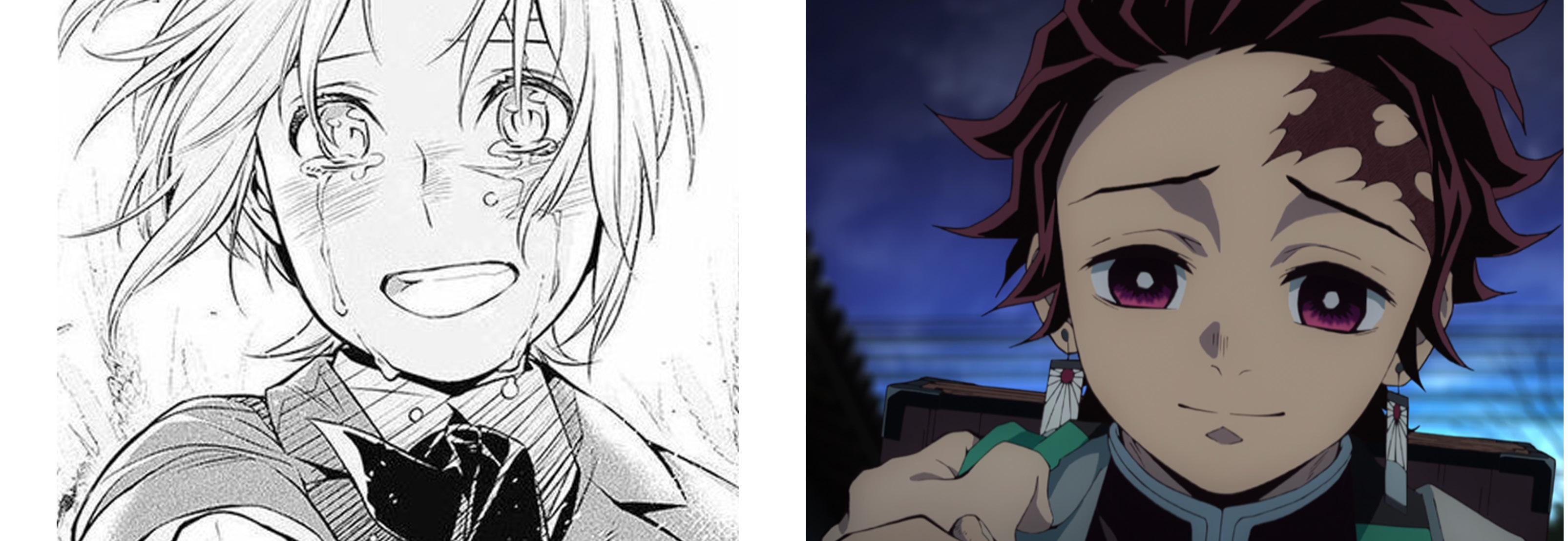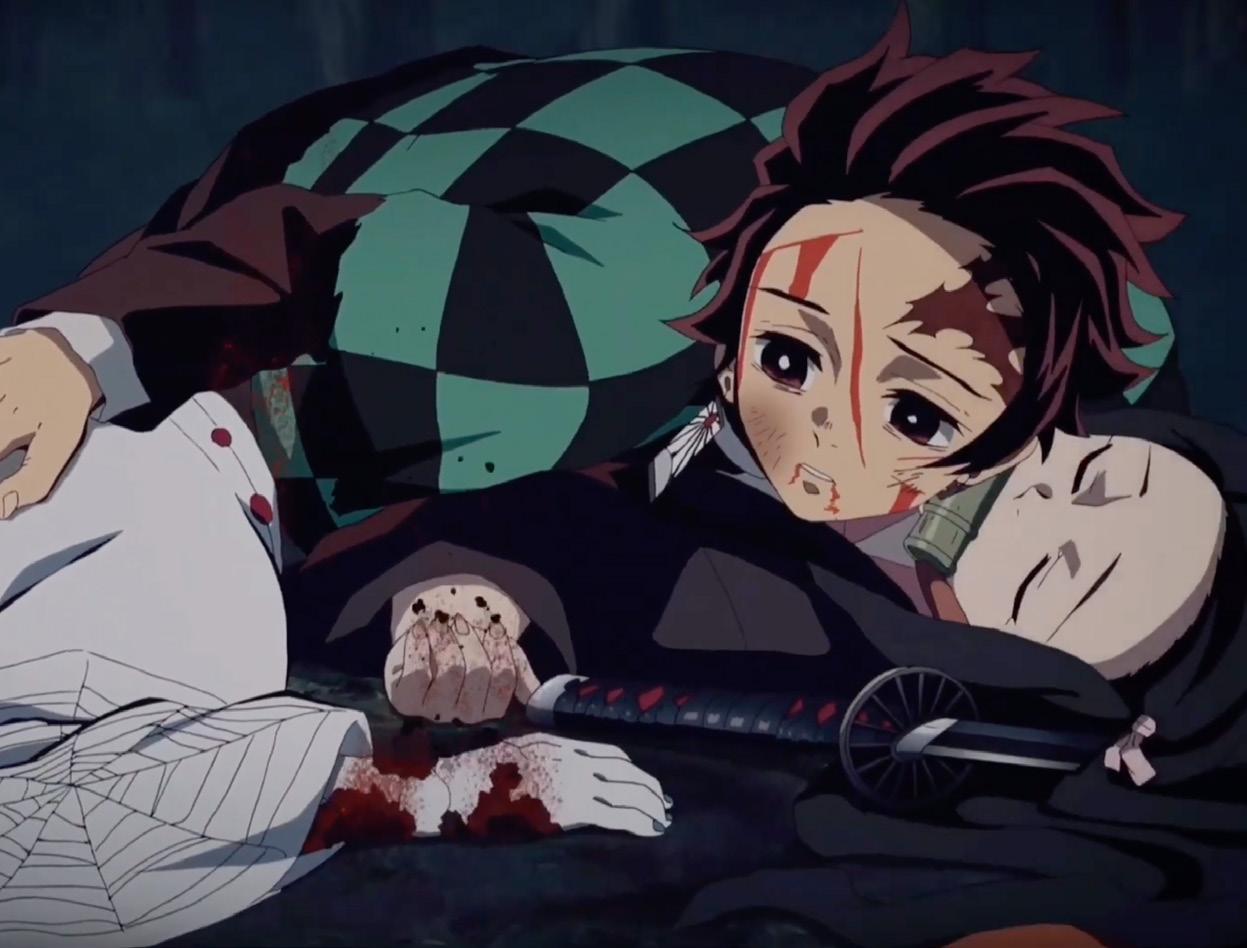
6 minute read
KIMETSU NO YAIBA IS D.GRAY-MAN’S BABY
SHARREL NARSICO - Artist, 2nd Year, Molecular and Cell Biology
Aaaaand nothing can convince me otherwise.
Advertisement
Originally published on Sept. 26, 2019
SPOILERS FOR DEMON SLAYER & D. GRAY-MAN
Most of you may have heard of Kimetsu No Yaiba, otherwise known as Demon Slayer, from its famous faux finale Episode 19 (Yes, it needs a capital) that took US’s Twitter by storm. If you haven’t watched Episode 19: Hinokami, I strongly recommend jumping into Crunchyroll and consuming all twenty-three minutes and forty seconds of it. I mean it, chug the whole episode down like cold water on a burning summer day—it’s that good. Maybe it won’t resonate as much if you haven’t watched all of the eighteen episodes before it, but it still can pack a punch. It’s the episode where countless channel reactions on Youtube have been phenomenal—from tears to screams to awed gasps, or just plain ol’ stunned silence. Kamado Tanjiro and Nezuko’s desperate grapple to protect each other had forcefully grabbed the attention of the world.
Now why am I spending so much time lavishing so much praise on KNY and its Episode 19? Because as it rose to fame, I was reminded, eerily so, of another anime where demons were just as prevalent. If you haven’t guessed from the title of this article already—I’m talking about D.Gray-Man. Know it? It’s that anime with the white haired boy named Allen Walker whose got a demonslaying arm, the one with a red-star scar on his left-side that lets him see demon souls?
Don’t remember it?
Haven’t heard of it before?

No surprise there—D.Gray-Man (DGM) aired on 2006 for 103 episodes till 2008 (that’s at least a whole decade ago!). The manga would later spend a whopping seven years in hiatus, where D.Gray-Man fans like me would eagerly and restlessly spend the rest of our time lying in wait until DGM: Hallows.
Which means I had plenty of time to re-watch and reread every single episode and chapter. This, my friends, is what has led me to this very moment, my fingers flying across the keyboard, back hunched, and most definitely late for the due date of this article! (Sorry, layout editors!) I said it before, and I’ll say it again—Kimetsu No Yaiba is D.Gray-Man’s baby. There is not an inch of doubt in my body. And I’m a meaty person, so that’s a whole fortress of certainty there.
As for why—let’s start with the basics: Both DGM and KNY are located in the past, and both, obviously, center on demons and the conflicts they create. D.Gray-Man is mostly European-centric while KNY is in Japan. Funnily enough, there’re odd advances in technology peppered in the two anime—D.Gray-Man’s people have flying golems for communication; Kimetsu no Yaiba has Japan in the early days of electricity, as shown when Tanjiro and Nezuko get to Tokyo where there’s a stark contrast between the darkness that coats villages at night and the shining brilliance of Tokyo streets.
Both have male leads, have at least one cute imouto in the anime, have headquarters, have black uniforms, blah, blah, blah.
The more interesting comparisons, really, start with our main characters: Kamado Tanjiro and Allen Walker. At first glance, the two are very different. Tanjiro’s a burgundy-haired teen who wears green-black checkered haori. Allen, in contrast, has white-hair from trauma, a star scar, and rocking his European gentleman vest, collared long-sleeves, a red tie, and fitted black pants. Sure, you could throw in that they both have a red scar on the left side of their faces. That’s it, right?
Nope!
Look instead at how they interact with other characters, and their main motivations. When young Allen Walker’s quasi-father Mana died, Allen turns to the main antagonist of DGM the Millenium Earl to revive Mana. This turns Mana into a demon, and instead of immediately killing Allen, Mana curses the young boy with the ability to see the trapped soul of a demon. Now, Allen Waker is a young exorcist, a person who slays demons, intent on saving souls from their demon bodies.

Kamado Tanjiro became a demon slayer also because of his past—his family gets killed, but his younger sister survives and becomes a demon because the main antagonist, Micheal Jackson, turns her into one. Now Tanjiro is a young man who hunts demons to hopefully turn his younger sister back to human.
Allen and Tanjiro, because of this kind of past are able to humanize demons. Where common folk and even most demon slayers and exorcists have a grudge against every demon they come across, Tanjiro and Allen are a nice fusion of sadness and anger. Anger at their respective antagonists for ruining the lives of others, sadness for those who were hurt, and compassion for the demons who are suffering in their own way. Rui’s episode was a big example of this for Tanjiro as when the child demon who’d almost killed him and hurt Nezuko gave off grief, our gentle otouto tried to give the child comfort in its last moments. Tanjiro even went so far as to tell Giyuu, a powerful and respectable demon slayer, off for stepping on the clothes of the child.

In DGM, Allen has always wished well to the parting souls of the demons, despite the trouble that they’ve caused in their time as the Millennium Earl’s puppet. But what truly took the cake was Allen carrying Alma, a deteriorating demon who loved a human who was still living, to the person the demon loved—despite said person being an overall douchebag, and definitely in spite of Alma nearly murdering Allen’s friends. There’s something beautiful and awe-inspiring in these two characters who care enough to do these for demons. For them to be able to show kindness to killers who’d have given no thought to the pain they’ve caused, in a real life context, it implies that there’s something forgivable in all of us. It’s a nice reminder, after all, that being “bad” and not perfectly good all the time does not mean that we’re not human, that we don’t deserve kindness. Their care and tenderness tugs at heartstrings because these characters, these boys, can accept us, flawed human beings.

I personally believe that that’s half the reason why audiences tend to like kind-hearted characters.
Jumping over to the opposing forces, DGM and KNY both have a main antagonist which have around 12-13 members, and both have mental trauma. Micheal Jackson has a hatred for hanafuda earrings because of one man, and the Millenium Earl has a personality split because (?) of one man.
On a lighter note (now that I realize I’m running out of words) Tanjiro and Allen are both polite young men, even when dealing with less… polite characters in their world. Tanjiro offers more of his food to Inosuke instead of getting mad when the blue-haired boy steals Tanjiro’s portions. Allen Walker’s passive aggressive when dealing with the blue-haired swordsman Kanda, for example when he asked Kanda to play catch the conversation ball in the Ark when Kanda didn’t answer. One of these two is definitely nicer when facing coarser people. (XD)
Even though I consider all these similar concepts and characteristics of characters between DGM and KNY damning evidence of their kinship, this doesn’t mean I think they’re almost one and the same. The beauty of anime is its ability to recreate a core concept in its own way.
Do you know of more similarities between DGM and KNY?



